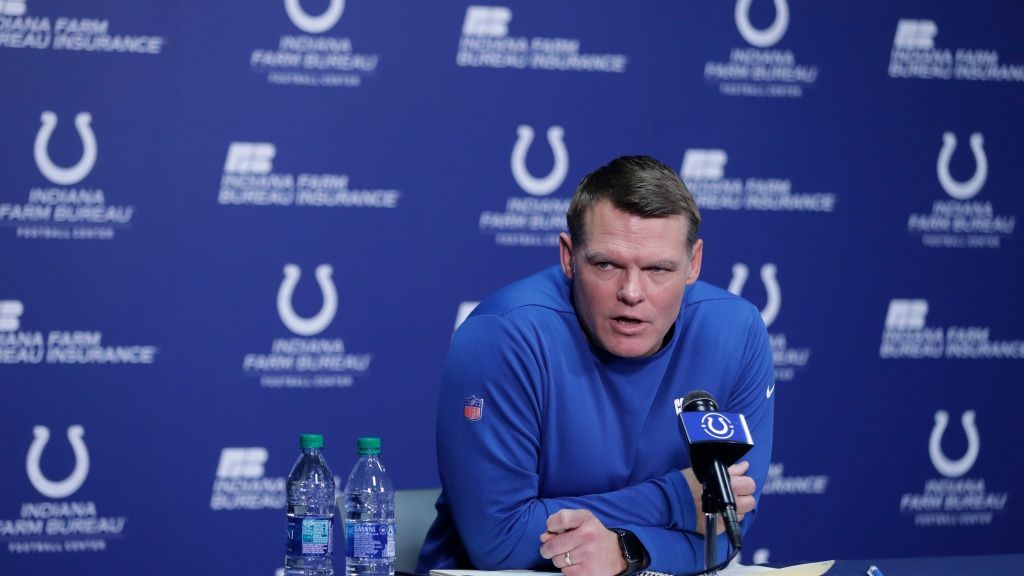Kraken’s Jared McCann sheds noncontact jersey, but Game 3 status vs. Stars unclear
Injured Kraken forward Jared McCann took to the ice for Sunday’s morning skate minus the noncontact red jersey he’d sported the previous day.
That fueled some speculation he might indeed suit up for Sunday night’s Game 3 of the Western Conference semifinal against the Dallas Stars. But the fact that McCann lingered on the ice with Kraken reserves a good 20 minutes after most players headed to the locker room at the Kraken Community Iceplex made it seem that a Game 4 return Tuesday might be more likely.
Kraken coach Dave Hakstol, as per usual, did little to clarify McCann’s status once the morning skate ended.
“It was a nice step for him,” Hakstol said. “He’s out of the red jersey and into the white jersey, so a positive step.”
McCann hasn’t played since suffering an apparent concussion in Game 4 of the Kraken’s opening-round series against Colorado when hit by defenseman Cale Makar well after the play was over. NHL teams are leery of divulging specific injuries and aren’t mandated to, unlike clubs in other major professional leagues such as the NFL and NBA.
The rationale behind NHL secrecy is that opponents can target players in injured areas, though the same theoretically holds true for players in other leagues.
Advertising
Oleksiak a big-bodied blocker
One reason the Kraken have limited goals allowed in these playoffs — besides the work of goaltender Philipp Grubauer — has been standout shot-blocking.
Kraken defenseman Jamie Oleksiak led the NHL with 31 blocked shots this postseason entering Sunday. One of his biggest blocks came in the closing minutes of Game 7 against Colorado when Logan O’Connor tried to fire the tying goal into an open left side of the net.
Oleksiak said shot-blocking is a great source of pride.
“I think when you look at teams that have won it, like Tampa, they have [Steven] Stamkos blocking shots, and [Brayden] Point and all those guys are getting in front of shots,” Oleksiak said after Sunday’s morning skate. “It’s obviously a big part of the game, but it also shows good leadership. It shows guys are willing to put their bodies on the line, and that kind of filters its way down.”
Oleksiak being one of the NHL’s biggest players at 6 feet 7 and 255 pounds makes him a natural to get his body in front of pucks. It’s one reason he sees ample time on the penalty-kill unit.
“I think sometimes it’s easier to try to get in front of a shot than to try to beat the play someplace else,” Oleksiak said. “I think it’s something I can bring to the table and do a good job at overall.”
But it isn’t a matter of merely sacrificing his body every chance he gets. There’s a timing aspect to shot-blocking, particularly with today’s shooters becoming more adept at quickly shooting pucks toward the net.
Advertising
“There’s definitely an art to it,” Oleksiak said. “I mean, nowadays guys are so good at pulling pucks and pushing pucks. You have to really read angles and where you are in relation to the net and the goalie’s position. So I think there’s definitely an art to it. Especially because guys are so skilled these days that it’s getting harder and harder to block their shots. You’ve just got to kind of limit their options and make sure they’re shooting from the least dangerous spot possible.”
Kraken hardly the quickest draw
Dallas has dominated the Kraken in the faceoff circle this series, winning 83 of 131 draws (63%) — many of them cleanly without any additional battle from secondary players. In Game 2 the Stars captured 44 of 64 faceoffs (69%), including 78% in the Kraken’s defensive zone.
That faceoff prowess might explain why the Stars have scored so many goals on tip-in shots from the point. It isn’t a matter of Dallas scoring right off the draw, but more of it being able to use those faceoffs won to generate enough sustained pressure in the Kraken’s end. That gives the Stars time to position players at the net front before well-choreographed, one-time blasts.
“We’re playing against the top faceoff team in the league,” Hakstol said of a Stars squad with an NHL-best 54.8% faceoff win percentage in the regular season compared with the Kraken’s second-worst 45.3%. “I thought they got away with a lot in the dot a couple of nights ago. So we have to … get into the gray area more. We’ve got to be anticipating.
“The biggest thing we can control, again, is 50-50 pucks. We lost way too many of those 50-50 draws. Everybody always looks at the centerman’s percentage, but look at those two or three seconds after the faceoff. We’re getting our butts kicked in that area, and we’ve got to be much better.”
First-year Stars coach Pete DeBoer acknowledged that his team was built to thrive in the faceoff circle even before his arrival in Dallas last June.
Advertising
“This year, it’s gone to an elite level,” he said. “I think the guys take a lot of pride in it. It affects all parts of our game — starting with the puck 5-on-5, penalty kill, power play. A really, really underrated part of the game for us.”
Stars rely on recent experience
Dallas has already experienced this season what it’s undertaking now — a pair of games in Seattle with one night off in between.
The teams met March 11 and 13 at Climate Pledge Arena. The Stars won 4-3 in overtime off a goal from Miro Heiskanen the first night, then 5-2 the second in a game not all that unlike Game 2 of this playoff series. Evgenii Dadonov, Joe Pavelski and Wyatt Johnston all tallied in both as the Stars jumped ahead 2-0, allowed the Kraken to get one back and then pulled away.
“Great arena, great franchise, great city, great energy in here,” DeBoer said. “We came in here late in the season for a back-to-back. Beautiful building. It’s an exciting place to play.”
Stars forward Max Domi stressed a good start and said building off the Game 2 victory is just as important as, and perhaps harder than, rallying from a loss.
“That team’s going to come out absolutely flying,” Domi said. “We know that. Just got to match that and be ready.”
Source: The Seattle Times


